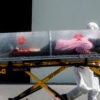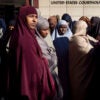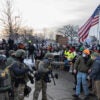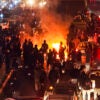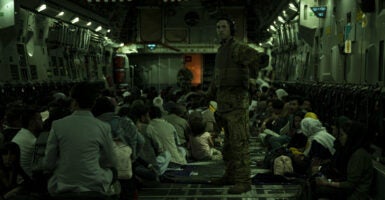The air evacuation out of Afghanistan was, in a word, amazing. Despite immense obstacles, U.S. Air Force airmen were able to rise to the challenge and evacuate 124,000 U.S. personnel and refugees out of Kabul following the Taliban takeover of Afghanistan.
While you may be thinking it was unprecedented for an Air Force that just celebrated its 74th birthday, you might be surprised at how many times our amazing airmen have stepped up in similar situations.
By any measure, the number of sorties flown in support of that operation was impressive but, since its inception, our Air Force has been called on to move more mountains than you may remember. Before we look at the incredible statistics out of Afghanistan, it may be worth strolling back through a bit of history to garner a little perspective.
The Berlin Airlift
The Air Force wasn’t quite a year old in the spring of 1948 when the Soviet Union blocked all rail, road, and canal access to Berlin. The blockade left 2.5 million people with no access to food, medicine, fuel, coal, and other basic necessities. Almost overnight, the Air Force and our allied partners built an air bridge that would sustain the lives of every man, woman, and child in that city.
Over the course of 15 months, our Air Force flew 189,963 of the operation’s 277,804 sorties. Collectively, those exceptional airmen delivered 394,509 tons of food, medicine, and coal to the people stranded in that city. While an evacuation wasn’t at the heart the operation, the return sorties would also move 83,405 tons of cargo and 68,000 people out of Berlin over the same period.
The intense operational tempo, coupled with adverse weather, led to the loss of 17 U.S. and eight British aircraft. The operation would take the lives of 70 American and British airmen, as well as 13 German citizens.
Vietnam Evacuation—Operation Frequent Wind
As the United States pulled out of Vietnam, the Air Force began the evacuation, codenamed Operation Frequent Wind, with an effort that would fly 2,600 Vietnamese orphans to the United States.
The first sortie of this operation suffered an explosion in the aircraft cargo hold shortly after takeoff that forced the pilot of the C-5 to set down in a rice patty. The crash resulted in the loss of the aircraft and 155 of 330 souls on board.
Over the course of Operation Frequent Wind, the Air Force flew around-the-clock, executing 201 C-141 and 174 C-130 missions and flying more than 40,000 Vietnamese out of the country. When combined with the efforts of its sister services, the United States would evacuate over 50,000 people from Vietnam—the vast majority by the Air Force.
Afghanistan Air Evacuation
While the details of the air evacuation out of Afghanistan have been overshadowed by the exceptionally poor decisions and planning behind the withdrawal, there are several amazing facts and facets that are aching to come to light.
With the loss of Bagram Air Base, the only way to get U.S. personnel and our allies out of this landlocked country was through Hamid Karzai International Airport, which would be used by every military and civilian aircraft in the largest noncombatant evacuation operation conducted by air assets in U.S. military history.
As with the Berlin Airlift and Operation Frequent Wind, an effort of this size begins and ends with subtle but important moves that rarely make headlines. Among the many heroes of this evacuation was a contingency response element of 100 airmen that was sent to Hamid Karzai International Airport early on to revitalize the airfield, keep the runway and taxiway lights functioning, and to repair Soviet-era equipment required to handle the uploading of passengers and cargo.
With no radar and no control tower to work from, U.S. military air traffic controllers would meter the flow of arrivals and departures of 700 different military and civilian aircraft that passed through that airport over the 17 days of the operation.
The fear and desperation of those trying to get out of the country manifested in and around the airport and forced several compromises to a system built to ensure the safety of the aircrew, passengers, and the nations set to host the evacuees.
In the rush to get people out of the country, cargo holds of departing flights were quickly filled wall-to-wall will little regard to passenger manifests. The uncertainties this created were fully reflected in the story behind the iconic photo of Reach 871. Originally tallied as 640, the aircraft actually had 823 Afghan refugees on board. If that doesn’t make the hair on the back your neck stand on end, then read on about security.
The compressed schedule removed any attempt to biometrically screen the refugees prior to boarding, and if metal detectors were used, they were something short of effective. Once departing aircraft were safely airborne, it was not uncommon for crew members to report being tapped on the shoulder and handed a weapon by a refugee.
By Aug. 15, the Air Force had already flown more than 300 sorties out of Kabul with passenger counts averaging 400 refugees per flight. In total, more than 124,000 people were safely flown out of Afghanistan, the vast majority of which were carried out on Air Force C-17 aircraft.
The operation consumed half of the Air Force fleet of 222 C-17s. By the end of August, more than 1,900 Air Force sorties were flown to move refugees, as armed overwatch for that effort, or to refuel those aircraft.
Yes, our airmen stepped up again in Afghanistan and—in spite of the incredibly poor decisions and planning made above them—they managed to pull a whole bunch of rabbits out of another collapsing hat.
It may seem miraculous to outsiders and—while they may take a moment to reflect on what they’ve done—to line airmen, this is just what they do. No other country in the world could have accomplished this feat.
Have an opinion about this article? To sound off, please email [email protected] and we’ll consider publishing your edited remarks in our regular “We Hear You” feature. Remember to include the URL or headline of the article plus your name and town and/or state.

